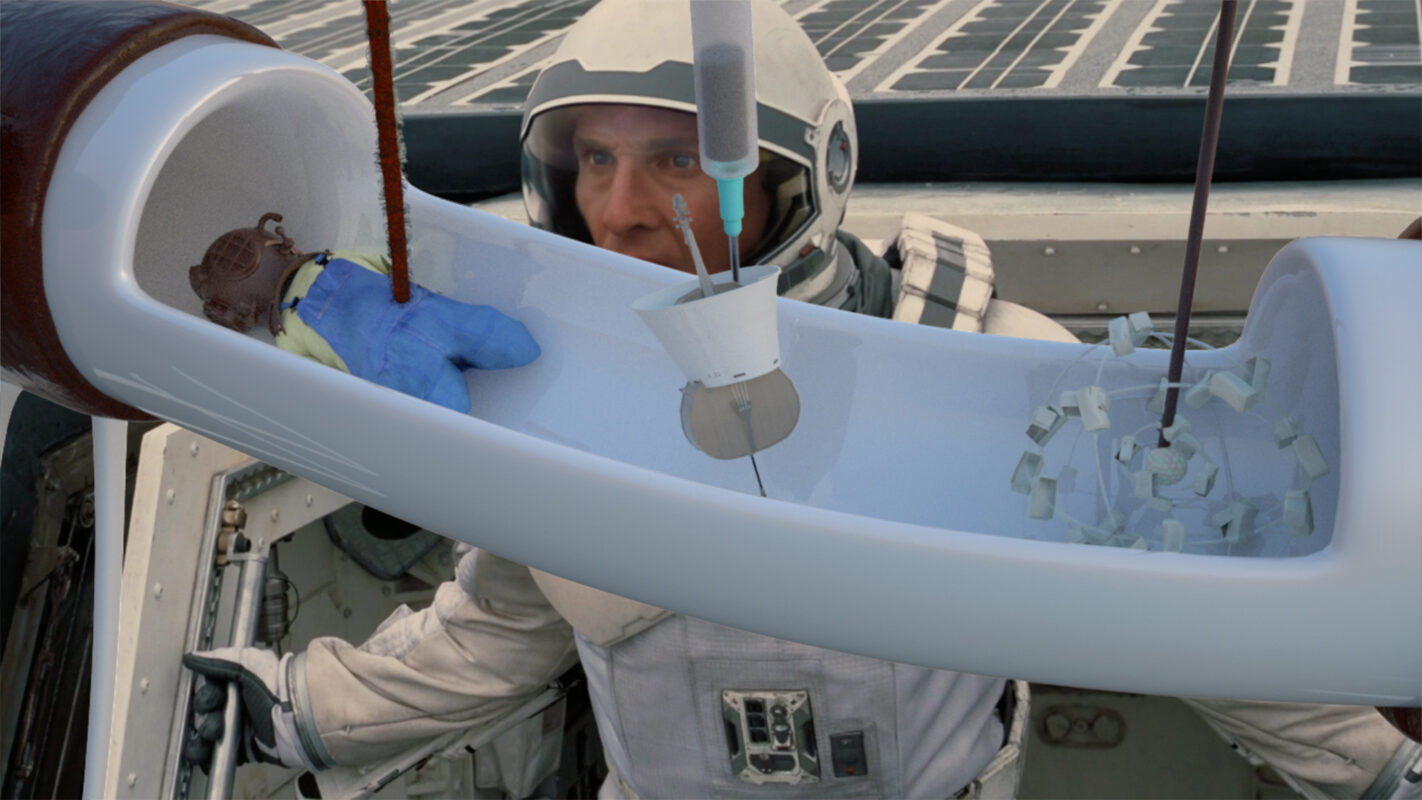Digital Bodies is organized by the Eli and Edythe Broad Art Museum at Michigan State University and curated by Carla Acevedo-Yates and Steven L. Bridges, Associate Curators. Support for this exhibition is provided by the Alan and Rebecca Ross endowed exhibitions fund and the MSU Broad’s general exhibitions fund.
About the Exhibition
Ode to Seekers 2012 (2016) celebrates mosquitoes, syringes, and oil derricks. Not only are these items symbols of significant threats to human life—mosquito-borne illnesses, drug addiction, the petroleum industry—but they are also causes of personal trauma for the artist, Andrew Norman Wilson. Influenced by John Keats’s “Ode on a Grecian Urn” (1820), wherein the narrator’s sense of mortality is intensified by the presence of the seemingly eternal art object, the video is structured as an infinitely looping ode with three central movements and distinct soundtracks. In the first, the camera, imitating the perspective of a mosquito, roves through the abandoned corridors of the Rockland Psychiatric Center’s children’s ward, where the artist once received treatment. In the second, highly saturated computer-generated 3-D models of the mosquito, syringe, and oil derrick thrust their piercers into a surface that resembles at once magnified human skin, desert salt flats, and a potato casserole. In the final movement, the models are co-opted by an assembly line apparatus that in turn pierces and sucks the color from them. This act of draining becomes a metaphor, a social critique warning of humanity’s dangerous drive towards self-destruction.
Digital Bodies
In a time of embedded lives and networked culture, where the screen acts as a mediator between the self and perceived reality, technology has ostensibly become an extension of the body, changing our relationship to space, ourselves, and others. Digital Bodies is a one-year program that features videos by artists who use and manipulate digital technologies—mainly computer-generated images, signs, and systems sourced from digital platforms—to reflect on how these technologies have impacted our everyday lives and changed the ways we relate to the world. Given our current state of constant digital expansion and acceleration, these works express the pervasiveness and indispensability of digital culture in shaping our daily interactions.
